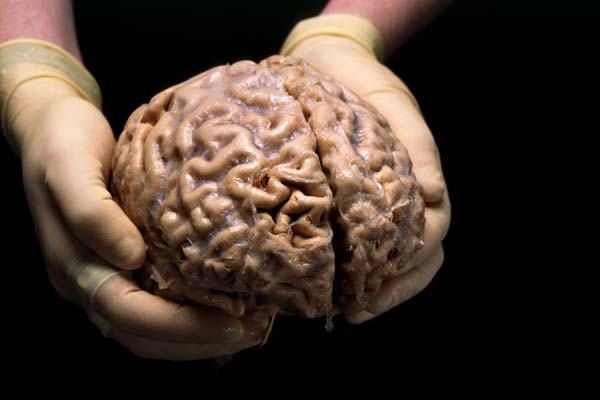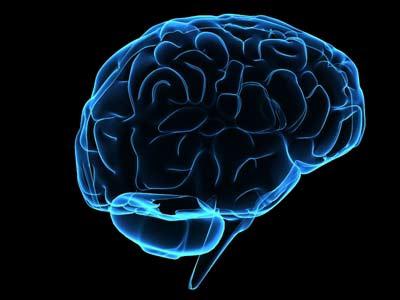
The human brain coordinates andregulation of all body functions important for normal functioning, and also controls behavior. Desires, thoughts, feelings - everything is connected with the work of the brain. If this body does not function, a person becomes a "plant".

The brain is a symmetrical structure, however,like many other organs. The weight of the brain at birth is about three hundred grams, in adulthood, it weighs one and a half kilograms. Considering the structure of the human brain, you can immediately find two hemispheres, which under cover the deep formations. Hemispheres are covered with peculiar convolutions that increase the outer cerebral layer. Behind - the cerebellum, below - the trunk, which passes into the brain dorsal. And from the trunk, and from the spinal cord, the nerve endings branch off, it is through them that the information from the receptors flows to the brain, it is through them that the human brain signals the glands and muscles.
Inside the brain there is a white substance,which is a nerve fiber that connects different parts of the body to each other and forms nerves that extend to other organs, and a gray matter that forms the cerebral cortex and consists mainly of the bodies of nerve cells. The human brain is protected by a skull - a bone case. The substances that are present inside the organ and the bone walls are separated by three shells: hard (outer), soft (inner) and thin arachnoid. The resulting space between the shells is filled in composition similar to the plasma of the cerebrospinal fluid (spinal fluid). The fluid itself is formed in the ventricles of the brain - the cavities inside it, its role is to supply the human brain with the necessary nutrients.
Sleepy arteries provide the brainblood supply, they are divided at the base into large branches that go to different parts of the brain. Surprisingly, 20 percent of all blood circulating in the body continually comes to the brain, although the weight of the organ itself is only 2.5 percent of the total body weight. Along with the blood, oxygen is supplied to the brain, supply is extremely important, since the body's own energy reserves are quite small.

From cells called neurons, consists ofcentral nervous system. They are responsible for processing information. The human brain includes 5 to 20 billion neurons. In addition to them, glial cells are present in the body, which are approximately 10 times larger than neurons. Glial cells form a skeleton of nerve tissue and fill the space between the neurons. Like any other cells, neurons are surrounded by a plasma membrane. The outgrowths of the cells are axons (most often one cell has an axon from a couple of centimeters to several meters in length) and dendrites (each neuron has many dendrites, they are branching and short).

Conditionally the brain is divided into threedepartment: the brain front, trunk, cerebellum. The forebrain consists of two hemispheres, a thalamus (a sensory nucleus that receives information from the organs and transmits it to the sensory cortex) and the hypothalamus (the area controlling homeostatic functions), the pituitary gland is an important gland. Hemispheres - the largest parts of the brain, connected together by a callous body - a bundle of axons. Each hemisphere has occipital, parietal, temporal and frontal lobes. The trunk includes the medulla oblongata (the lower part of the trunk that passes into the spinal cord), the variolium bridge (connected to the cerebellum by nerve fibers), and the middle brain (through which the motor ways go to the spinal cord). The cerebellum is under the occipital lobes of the brain, it controls the position of the trunk, limbs, head, plays a big role in the development of motor skills.
</ p>>